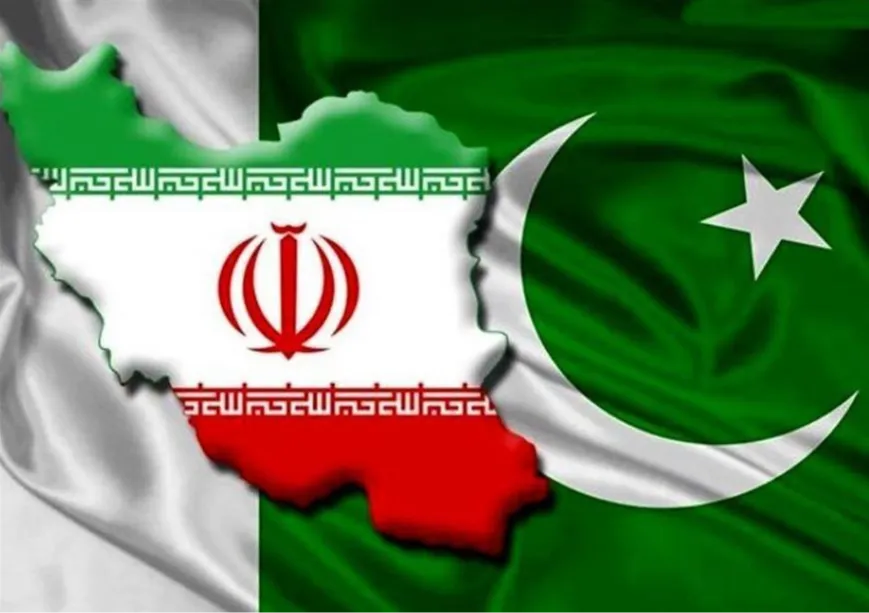-
CENTRES
Progammes & Centres
Location
Chances are that the tit-for-tat exchange between Iran and Pakistan will not escalate; neither side wants nor can afford an open conflict

The badlands that form the Iran-Pakistan border have for years been notorious for smuggling, human trafficking, narcotics trade, and of course, movement of insurgents and terrorists. It is anything but a tranquil frontier because skirmishes, shallow incursions and raids, and even occasional mortar shelling are fairly routine. But both countries have somehow managed to keep things from spiralling out of control. They have remained engaged with each other at all levels, and even set up mechanisms to not only settle the crises that routinely take place along the border but also address the terrorism issue. Until now that is.
On 16 January, Iran launched a missile and drone attack on Pakistani soil against a Pakistan-based Sunni terrorist group Jaish al-Adl. This was a serious escalation on the part of Iran, one which came without warning and was seen by Pakistan as an unprovoked attack. Pakistan responded initially by downgrading diplomatic relations and calling off all bilateral visits. But on 18 January, Pakistan launched counter-strikes in Iran against alleged camps of Baloch separatists. The ball is now back in Iran’s court. Everyone is waiting and watching to see if Iran goes for round two and rises up the escalation ladder, or backs off.
Iran is known to do such posturing on the ground—in 1998 after the Taliban killed Iranian diplomats in Mazar-e-Sharif, the Iranians were all fire and fury and amassed their forces on the Afghan border and threatened war but never moved forward.
Some unconfirmed reports are doing the rounds on social media of Iran emptying areas bordering Pakistan, moving troops towards the border with Pakistan, and deploying some ballistic missile batteries. In what appears to be a show of force, Iran is also holding a big air defence exercise close to the border with Pakistan. Much of this is most likely nothing more than Iran posturing, and not necessarily an indication of any kind of preparation for kinetic action. Iran is known to do such posturing on the ground—in 1998 after the Taliban killed Iranian diplomats in Mazar-e-Sharif, the Iranians were all fire and fury and amassed their forces on the Afghan border and threatened war but never moved forward. Chances are this is exactly how the current exchange between Iran and Pakistan will end. Neither side wants nor can afford an open conflict. For its part, Pakistan will dial down the stridency in public discourse and make conciliatory noises. Already, both sides are making noises that suggest that they won’t push the envelope any further.
But miscalculations cannot be ruled out, in which case all bets are off. It was, perhaps, a miscalculation on the part of Iran that made it flex its muscles against Pakistan on the same day it also targeted both Iraq and Syria. Iran, most likely, saw Pakistan as a soft target, a relatively costless option. Pakistan was so embroiled in its own existential crises that it wouldn’t or couldn’t retaliate. Pakistan was already engaged on three fronts—India, Islamist insurgency coming from Afghanistan, and the domestic front against Imran Khan. Opening a fourth front with Iran was something Pakistan would avoid, or so Iran believed. The Pakistan Army too is not really in a shape to fight a war. The former Army chief had indicated as much. Economically, the country is running on fumes and can’t afford a hot conflict. At best, Pakistan would take a few diplomatic steps which wouldn’t cost Iran anything. Targeting Jaish al-Adl terrorists in Pakistan would satisfy domestic public opinion in Iran, which had seen a spate of attacks in the last few weeks and months in the very restive Sistan-Balochistan province. The attacks were also Iran’s way of signalling that efforts to corner it and encircle it through proxies would extract a price from the countries that allowed their territory to be used against Iran.
Pakistan was already engaged on three fronts—India, Islamist insurgency coming from Afghanistan, and the domestic front against Imran Khan.
Iran’s analysis of Pakistan's weakness was not wrong; its assessment of Pakistan's reaction was. The fact that Pakistan is weak, and the state is under severe economic, political, security, social, and institutional stress is precisely what made Pakistan desperate to retaliate because to not do so would mean being taken for a complete pushover, not just by Iran but also by other regional players, especially India. It was a matter of strategic survival for Pakistan to respond, not just diplomatically but also militarily, albeit in a way that didn’t provoke Iran to go berserk. Domestically, the Pakistan Army-run hybrid regime had no option but to hit back at Iran. The Army is very unpopular and was being lampooned after the Iran attack. Its reputation, and its raison d’être as the guardian of Pakistan's territorial and ideological frontiers was being questioned. Trolls were asking if the Pakistan Army was only good for fighting against and imprisoning Imran Khan, and is unable to protect Pakistan from a foreign power. It, therefore, also became a matter of political survival of Pakistan's military to give an appropriate and proportionate military response, and then keep fingers crossed that things would settle after one round of tit-for-tat attacks.
If that is how things remain, Pakistan would be mighty pleased. It would restore conventional deterrence and convey a message to its neighbours (notably Afghanistan and India) that if attacked, Pakistan would not hold back and will respond in kind; and it would raise the political stock of the armed forces and restore its image in the public, even if temporarily. If Pakistan is lucky, it will be able to leverage this stand-off to demonstrate its utility to not just its benefactors in the Arab world (who have been quite tight-fisted in bailing out Pakistan in recent years) but also to the United States (US). The fact that Pakistan will never go all the way to vex Iran is another matter. Pakistan knows that Iran has significant assets and leverages inside Pakistan, which can prove to be quite disruptive and destructive if push comes to shove. However, Pakistan will be tempted to string the US and Arab states along and milk them as much as possible. On the flip side, Pakistan, today, has downgraded its diplomatic relations with all its three neighbours—Afghanistan, India, and Iran. At a time when the regime in Pakistan is desperately trying to attract investments and project Pakistan as a hub of trade and not terrorism, the spat with Iran is a big spoiler.
Pakistan knows that Iran has significant assets and leverages inside Pakistan, which can prove to be quite disruptive and destructive if push comes to shove.
For Iran, the Pakistani retaliation creates a dilemma. If Iran decides to escalate, it will open another front for itself, which is hardly a sensible thing to do now when it is so deeply involved in the widening arc of conflict in West Asia (Middle East)—the Israel-Palestine war. On the other hand, if Iran backs down, it will send a message to other players in the region that the way to contain Iran’s expanding influence is not by targeting its proxies but by targeting it directly. There is a lot of chatter that stability in the Middle East will not be possible without striking at the “head of the snake” (read Iran). By not doing anything about Pakistan’s actions deep inside Iran, it could end up tempting its adversaries to launch attacks on Iran to deter it from stirring trouble in the region through its para-state proxies. What is more, emboldened by Iran’s backing down, Pakistan-based Sunni terrorist groups will be more likely to attack Iran further.
If the tensions between Iran and Pakistan don’t boil over, then chances are that the two sides will re-engage each other after a few weeks, maybe a couple of months. But if these tensions lead to open hostilities or even a hot border, then it will add to an already messy situation in the Middle East. This will impact India because it could disrupt the energy supply routes and trade corridors between India and Arab Gulf states. Equally concerning is the fact that these tensions open up an opportunity for China to expand its diplomatic footprint in the region by playing mediator between its strategic partner Iran and its client state Pakistan. The US is in no position to play the role of an enforcer in the region. That role is up for grabs and China is quite unabashedly coveting it.
Sushant Sareen is a Senior Fellow at the Observer Research Foundation.
The views expressed above belong to the author(s). ORF research and analyses now available on Telegram! Click here to access our curated content — blogs, longforms and interviews.

Sushant Sareen is Senior Fellow at Observer Research Foundation. His published works include: Balochistan: Forgotten War, Forsaken People (Monograph, 2017) Corridor Calculus: China-Pakistan Economic Corridor & China’s comprador ...
Read More +